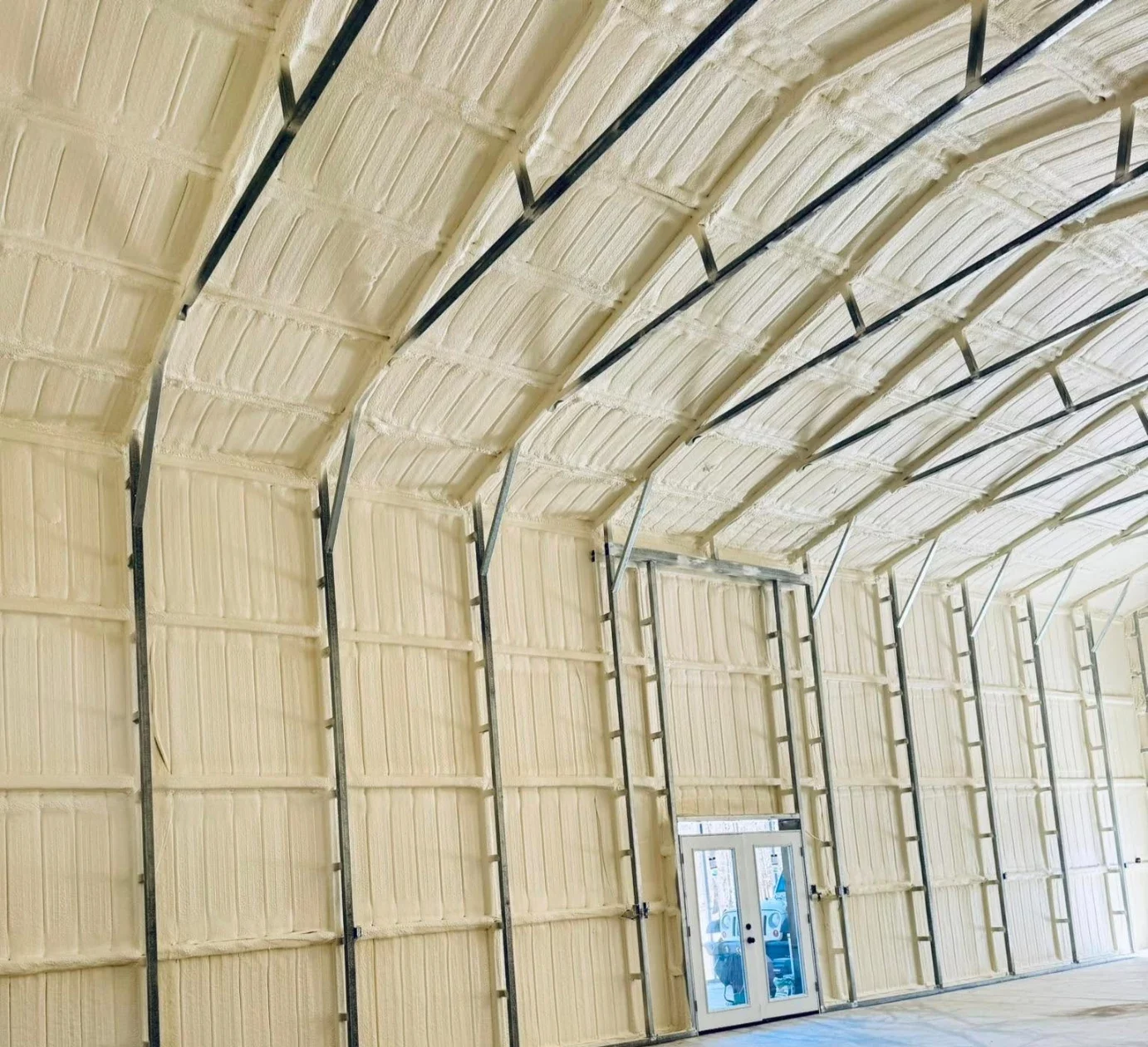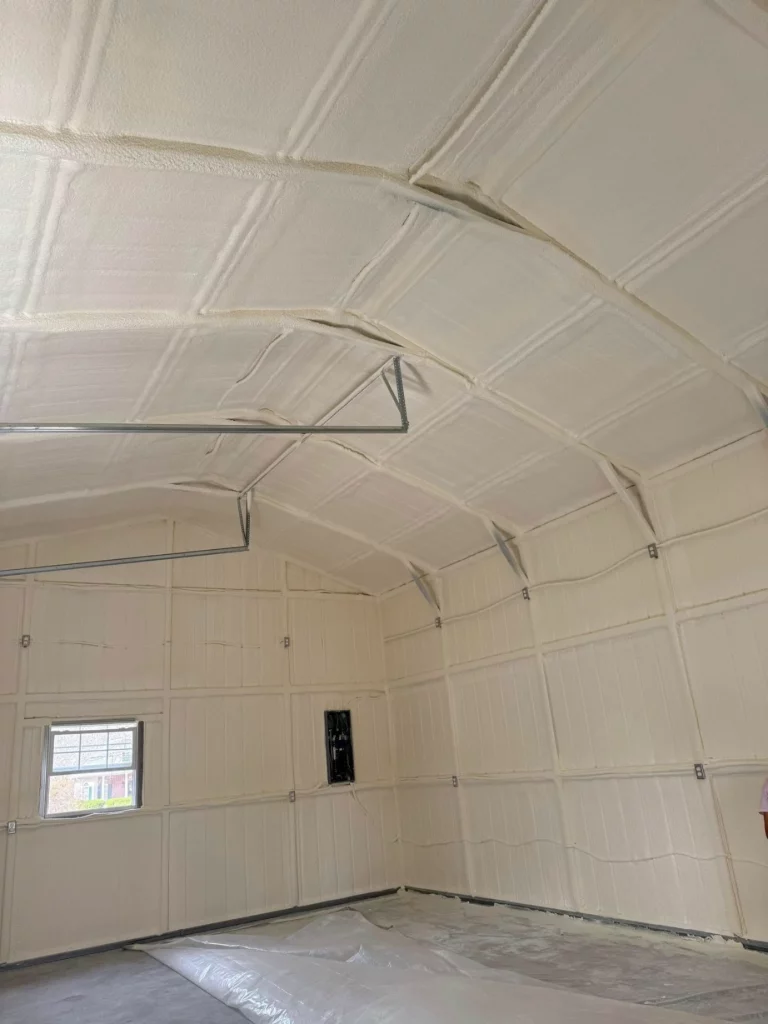
Spray foam insulation offers more than thermal efficiency. While energy savings often lead discussions, other benefits carry equal weight in long-term building performance, comfort, and structural integrity. Spray foam delivers enhanced moisture resistance, sound control, air sealing, and structural reinforcement. These advantages directly affect indoor comfort, building lifespan, and occupant health.
LMC Insulation, LLC has applied spray foam across residential, commercial, agricultural, and new construction sites throughout Arkansas. Field experience confirms its wide-reaching impact beyond utility cost reduction. This guide outlines those advantages, backed by technical data and site-tested observations.
Spray foam creates an effective air barrier that limits the infiltration of outdoor pollutants, allergens, and particulates. By sealing gaps and cracks, it reduces exposure to airborne contaminants that trigger respiratory issues. This is especially useful in humid Southern regions where mold risk is higher.
Bonus Tip: Use closed-cell foam in crawl spaces or basements to inhibit mold development and lower relative humidity.
Closed-cell spray foam adds compressive strength to walls and roofs. When applied between studs or to roof decks, it can enhance racking strength by up to 300% (per FEMA guidance). This reinforcement is especially relevant in tornado-prone regions like Northwest Arkansas.
Spray foam resists water intrusion and does not absorb moisture like fiberglass or cellulose. Closed-cell spray foam doubles as a vapor retarder, helping prevent condensation buildup in attics and exterior walls.
Bonus Tip: In agricultural settings, apply closed-cell foam on metal outbuildings to prevent rust formation caused by trapped humidity.
Open-cell spray foam excels at absorbing sound between rooms or exterior walls. It reduces transmission of airborne noise, contributing to quieter living or working environments.
| Feature | Closed-Cell Spray Foam | Open-Cell Spray Foam |
|---|---|---|
| R-Value (per inch) | ~6.0-7.0 | ~3.5-4.0 |
| Air Seal | Yes | Yes |
| Vapor Retarder | Yes | No |
| Moisture Resistance | High | Low |
| Density | ~2.0 lb/ft³ | ~0.5 lb/ft³ |
| Sound Absorption | Moderate | High |
| Structural Reinforcement | Yes | No |
| Cost per Board Foot (approx.) | Higher | Lower |
| Specification | Closed-Cell Foam | Open-Cell Foam |
|---|---|---|
| Compressive Strength | 25-30 psi | <5 psi |
| Perm Rating (1″ thickness) | <1.0 | >10 |
| Air Leakage (ASTM E283) | <0.02 L/s·m² | <0.02 L/s·m² |
| Water Absorption | <1% | 5-10% |
| Flame Spread Index (ASTM E84) | <25 | <25 |
Sources: ASTM International, FEMA Building Science, SPFA Tech Guide 2024

Bonus Tip: In multi-story buildings, consider using open-cell foam for interior partitions and closed-cell for exterior sheathing to balance acoustic and vapor needs.
Attics, crawl spaces, rim joists, and wall cavities are high-impact zones. These areas typically suffer from air loss and moisture issues.
Yes. Closed-cell foam adheres well to metal and reduces condensation, rust, and temperature swings.
Once cured, spray foam is inert and does not emit particulates. It can reduce allergen intrusion by limiting air leaks.
Closed-cell foam usually does not. Open-cell may require one in humid or cold regions.
Spray foam delivers multiple performance advantages beyond reducing energy bills. It reinforces structures, improves indoor air quality, resists moisture, and dampens sound. The right type and application method depend on climate, building use, and project goals.
Choosing between open-cell and closed-cell spray foam depends on building use, exposure risks, and long-term performance goals. For expert guidance and compliant application, contact LMC Insulation, LLC at [email protected] or (479) 351-6175. Schedule an evaluation to align insulation strategy with structural and environmental needs.
When installed properly, spray foam can last over 30 years without degrading or sagging.
Yes. After curing, it can be coated with thermal barriers or fire-retardant paints if required by code.
None under normal conditions. Periodic inspection in attics or crawl spaces is advised to check for pest or structural issues.
Spray foam is not a food source, but it does not act as a pest repellent. Entry points should be sealed before installation.
Yes, with proper substrate temperature and material conditioning. Experienced crews adjust application methods for cold conditions.